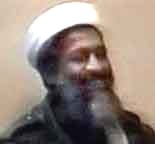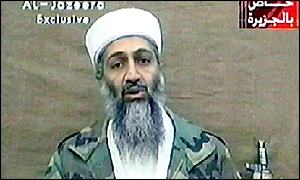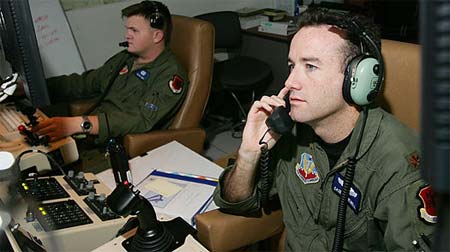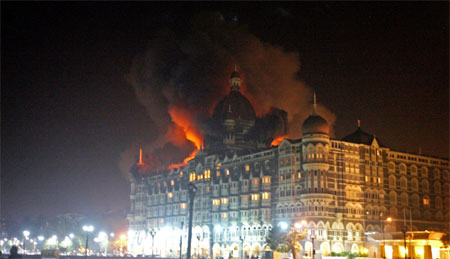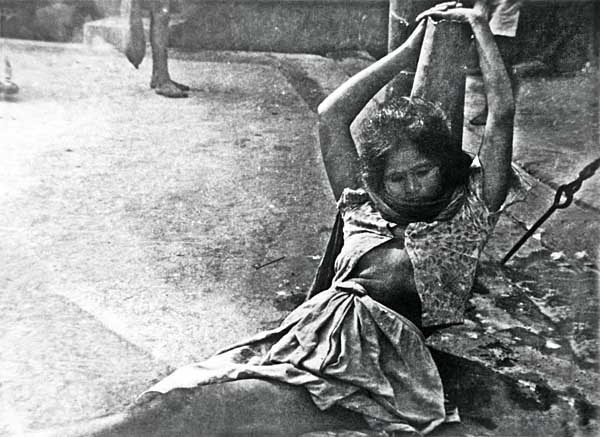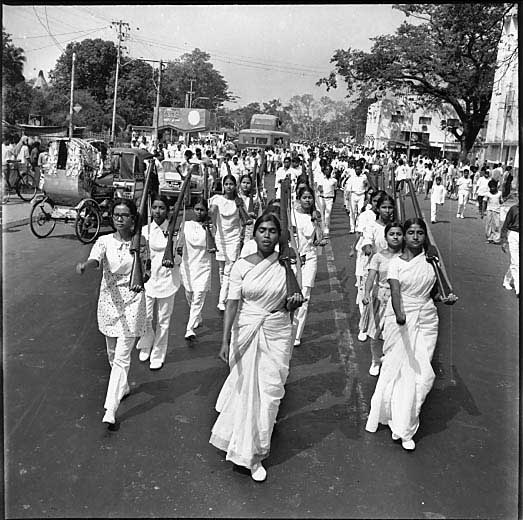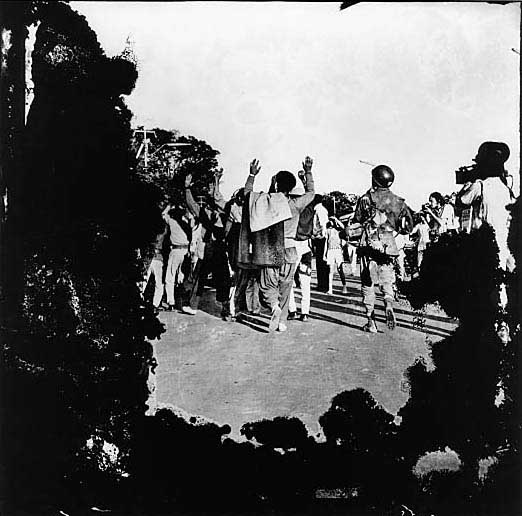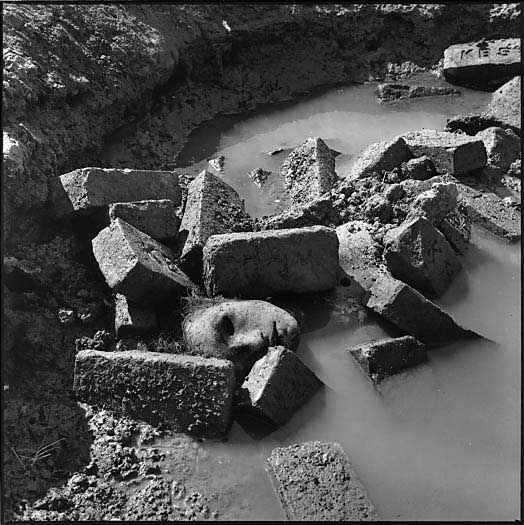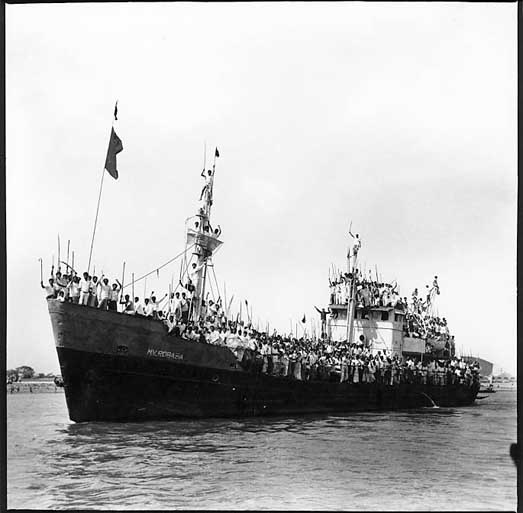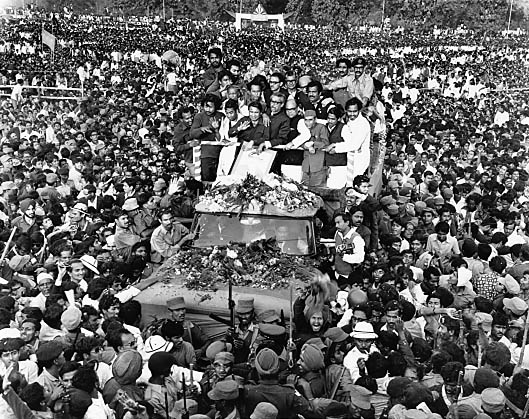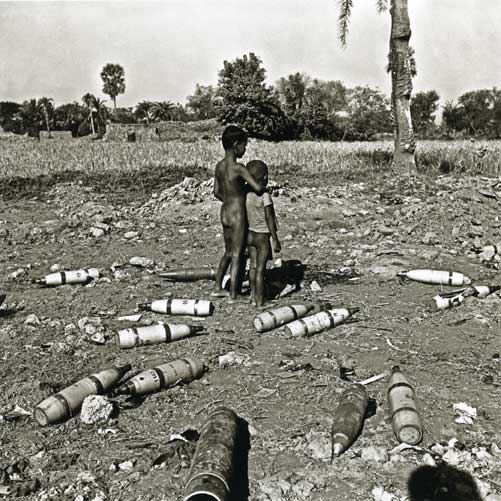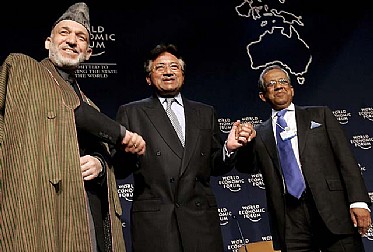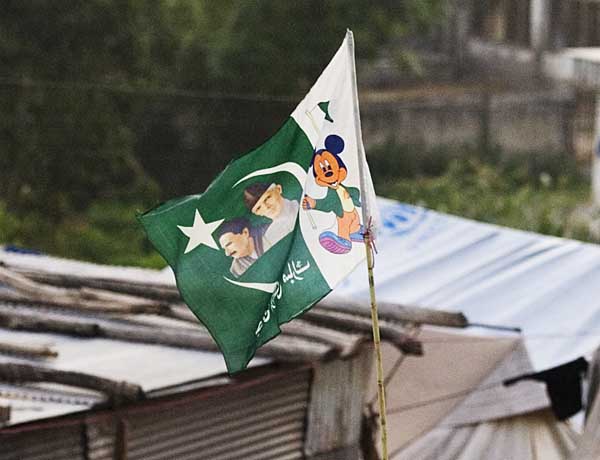By Rahnuma Ahmed
Who else…, but Osama bin Laden?
He’s alive. Not only in the western imagination which needs an unlimited supply of bogeymen as its alter. To create and re-create myths of its innocence which serve to justify the waves of death and destruction that it wreaks on the `rest.’ In earlier times, to civilise savages and barbarians. And later, in the last couple of decades, to spread progress and democracy. As the Berlin wall tumbled down, the earlier bogeyman ? the communist ? was soon enough replaced by `blood-thirsty’ Islam, and its `jihadis’. The `rest’ of the world knows this.
But surely not only in the western imagination, surely he’s alive in a real-time sense too? After all, we see videos cropping up now and then showing us the bogeyman threatening vengeance on the west for killing `our people.’ The battle will continue until victory is acheived. Till then, believers will die for the cause.
Actually, ahem there is reason to believe that he’s ahem dead. Yes. For the last nearly-eight years.
Osama bin Laden: Dead or Alive?
At least that’s what David Ray Griffin, professor of theology, political analyst and foremost in the 9/11 truth movement, thinks. In his Osama bin Laden; Dead or Alive, a little book that was published recently, he puts forth two types of evidence, objective evidence, and that based on testimonies.
Five objective facts are laid out to convince readers. First, the CIA had regularly intercepted messages between bin Laden and his people, but this stopped on December 13, 2001. No messages, no CIA interception. Second, a Pakistani daily published a report on December 26, 2001 which said, “A prominent official in the Afghan Taleban movement…stated…that he had himself attended the funeral of bin Laden and saw his face prior to burial.” Third, he suffered from kidney disease. In July 2001, he had been treated in the American Hospital in Dubai, and had later ordered two dialysis machines. According to a CBS news report, the night before 9/11, he was receiving kidney dialysis treatment in a hospital in Pakistan. Dr Griffin writes, on the basis of a video of bin Laden made in either late November or early December of 2001, Dr? Sanjay Gupta thinks that he was probably in the last stages of kidney failure.
The details of what Dr Gupta (CNN’s medical correspondent and a brain surgeon) said can be? found on the CNN website’s Health section. Pictures of bin Laden show a “sort of a frosting over of his features — his sort of grayness of beard, his paleness of skin, very gaunt sort of features.” Symptoms that are associated with chronic kidney failure, renal failure. Through the entire length of the video, says Dr Gupta, bin Laden did not move his arms. Not once his left arm; his right side, only a little. These speak of a stroke. If he was not receiving proper medical treatment, and this means not being separated from his dialysis machine (which requires electricity, clean water, a sterile environment), a kidney specialist, and a technician, “it’s unlikely that you’d survive beyond several days or a week at the most.”
According to a July 2002 CNN report, bin Laden’s bodyguards had been captured in February that year. If the bodyguards were captured “away from bin Laden,” argues Dr Griffin, it was very likely that the man himself was dead. The fifth reason is the $25 million reward announced by the US government since 2001, for any information that will lead to the capture or killing of bin Laden. It has produced no results “even though Pakistan has many desperately poor people.” As I read this I cannot help thinking, Enron, American economy in tatters, surely not because of poor people…? Anyway, to get back to the bin Laden story, the testimonial evidence which Dr Griffin advances is from people who are in a “position to know,” people like president Pervez Musharraf of Pakistan, president Hamid Karzai of Afghanistan, Iran-Contra figure Col Oliver North. It includes sources within Israeli intelligence who say that any new messages from bin Laden are “probably fabrications.” Whereas sources within Pakistani intelligence “confirm the death of…Osama bin Laden” and go on to add, “the reasons behind Washington’s hiding news on the death of Osama bin Laden to the desire of hawks of the American administration to use the issue of al-Qaida and international terrorism to invade Iraq.”
The `Fatty’ bin Laden Tape, and others
Some of the videos are obvious fakes. One of these is known as the Confession tape, in which bin Laden contradicts what he had said earlier, on four separate occassions, that he was not responsible for 9/11. In this, reportedly found by US troops in a house in Jalalabad, Afghanistan, while talking to a visiting sheikh bin Laden says that he had not only known about the 9/11 attacks but had personally overseen every detail.
1) Fatty bin Laden/Jalalabad video (being dated November 9 and released December 13).
Osama has a much taller and narrower nose.
Osama has a less rounded brow ridge.
Osama is less well nourished.
Osama has lower and less full cheeks.
Osama’s forehead slopes back more.
Osama’s face is wider at the level of his eyes.
Dr Griffin lists even more differences, a black beard, not a grey one. A darker skin, and not bin Laden’s pale self. His slim, pianist fingers had turned short, stubby. More like those of a boxer. Although left-handed, he is seen writing a note with his right hand. Most telling however, are these words, “‘Due to my experience in this field, I was thinking that the explosion from the gas in the plane would melt the iron structure of the building and collapse the area where the plane hit and all the floors above it only. That is all we had hoped for.” But the real bin Laden, who has a civil engineering degree, would have known that a building fire cannot melt steel.
Did the American ruling class bother with such trivial details? But of course, not. Quoting US officials Washington Post said, the video “offers the most convincing evidence of a connection between Bin Laden and the September 11 attacks.” Whereas president Bush ecstatically crowed, “For those who see this tape, they realise that not only is he guilty of incredible murder, but he has no conscience and no soul.”
Another video, known as the “October Surprise” video appeared in end-October 2004, timed to help George Bush win the presidential election. This bin Laden, had turned secular. Where bin Laden’s own messages had been full of references to Allah and the Prophet Mohammad, the only Mohammad mentioned here was the 9/11 `terrorist’ Mohammad Atta.
While some critics of America’s imperial wars think that Dr Griffin’s question is irrelevant, that the “war policy makers in the US government can easily deal with a bin Laden death,” and can “find ways to justify their never ending war on terror” (Maher Osseiran), it is nonetheless true that bin Laden was called upon by president Barack Obama in his March 27 address, which announced the extension of the Afghanistan war beyond its borders:
?[A]l Qaeda and its allies – the terrorists who planned and supported the 9/11 attacks – are in Pakistan and Afghanistan. Multiple intelligence estimates have warned that al Qaeda is actively planning attacks on the U.S. homeland from its safe-haven in Pakistan. . . . [A]l Qaeda and its extremist allies have moved across the border to the remote areas of the Pakistani frontier. This almost certainly includes al Qaeda’s leadership: Osama bin Laden and Ayman al-Zawahiri.?
America, it seems, needs bin Laden more than he needs them. After all, the evidence presented seems to indicate he’s dead. Has been, for quite some time.
Published in New Age, December 21, 2009

